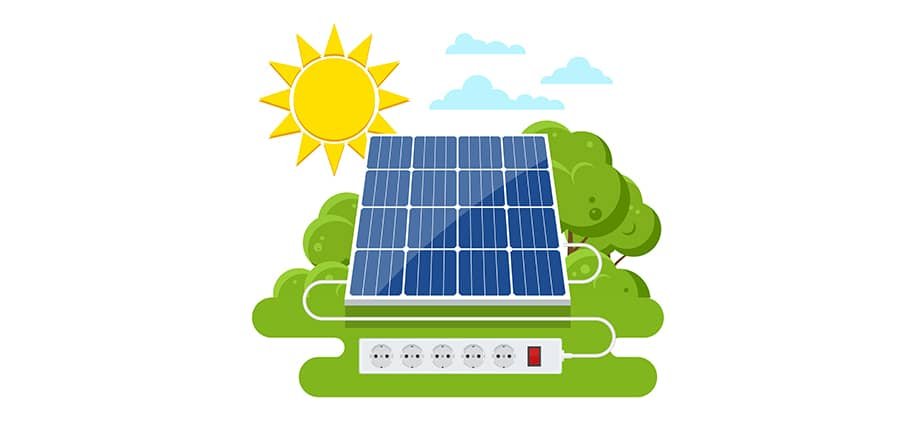Contents
6 Best Solar Feed-In Tariffs in ACT
Looking for the best feed-in tariff in ACT? We've got you covered. This article encompasses everything you need to know about FiT rates in ACT. First, you'll find our list of the top FiT rates sorted from highest to lowest in the table below. Here, we list the minimum and maximum FiT you may be eligible for by signing up to the retailer. Next, we cover the top 3 solar plans currently available. In this section, you'll find a comprehensive overview of each plan followed by the top 3 features each plan offers – such as incentives, discounts, applicable fees, and more. Lastly, we cover the FiTs of the Big 3 (Origin Energy, Energy Australia, & AGL) so you can see how they compare to the rest of the market. Have additional questions that you couldn't find in this article? Give our solar experts a call at 1300 232 848 and see what free solutions we can provide you with.
| Retailer | Minimum FIT (c/kWh) | Maximum FIT (c/kWh) |
|---|---|---|
|
ActewAGL
|
10.00 | 15.00 |
|
Origin Energy
|
10.00 | 12.00 |
|
Energy Australia
|
7.60 | 12.00 |
|
Energy Locals
|
7.10 | 7.10 |
|
Red Energy
|
6.00 | 6.00 |


3 Best Solar Plans in ACT
ACT has a large number of solar plans – with each offering a competitive feed-in tariff. Choosing the right plan however, goes beyond just the FiT, which is why we cover important features of each solar plan, including incentives, variable and fixed rates, and more. Please note that plans are subject to change. Any questions regarding plan specifics should be directed toward the retailer. Want to see if we can get you a better deal on your electricity? Call us on 1300 232 848 now.
ActewAGL - Solar Saver - 1st Place
In 1st place, we have the Solar Saver plan by ActewAGL. Per ActewAGL, this solar plan is designed to maximise your solar system’s value while helping power your home through a clean, renewable source of electricity.
With a competitive rate and high feed-in tariff, this plan offers solar owners great value for their money.
Some features of this plan include:
- 15c/kWh
- Zero exit fees
- No lock-in contracts
| Retailer | % Below DMO* | Price/year (Est.) |
|---|---|---|

Solar Saver
|
5% | $2,038 |
*Australian Capital Territory electricity rates are based on usage of 6100kWh/year for a residential customer on a single rate tariff in the Evoenergy network, the DMO reference price is: $2,152 / year. Click here for more information.
Origin Energy - Solar Boost - 2nd Place
Coming in 2nd place, we have the Solar Boost plan by Origin Energy. According to Origin Energy, this plan is tailored specifically for homes with solar systems. With zero exit fees and no lock-in contracts, customers can leave when they choose. Couple this with a competitive FiT and you have an enticing solar plan that’s worth considering.
This plan is not ideal for solar owners who purchase a high amount of power from the grid, but great for those that are high exporters.
Some features of this plan include:
- 12c/kWh
- Zero exit fees
- Mobile App
| Retailer | % Below DMO* | Price/year (Est.) |
|---|---|---|

Origin Solar Boost
|
0% | $2,152 |
*Australian Capital Territory electricity rates are based on usage of 6100kWh/year for a residential customer on a single rate tariff in the Evoenergy network, the DMO reference price is: $2,152 / year. Click here for more information.
Energy Australia - Solar Max - 3rd Place
In 3rd place, we have the Solar Max plan by Energy Australia. According to Energy Australia, this plan has the highest FiT when you export less than 12kWh per day. This plan also includes variable rates, zero exit fees, and no lock-in contracts.
If you are a high exporter and purchase minimal power from the grid, this plan is right for you.
Some features of this plan include:
- 12c/kWh
- Zero exit fees
- Variable energy rates for 12 months
| Retailer | % Below DMO* | Price/year (Est.) |
|---|---|---|

Solar Max
|
7% Above | $2,293 |
*Australian Capital Territory electricity rates are based on usage of 6100kWh/year for a residential customer on a single rate tariff in the Evoenergy network, the DMO reference price is: $2,152 / year. Click here for more information.
Big 3 Solar Feed-In Tariffs in ACT
In the table below, you’ll find the current solar feed-in tariffs in ACT for the ‘Big 3’ energy retailers: Origin Energy & Energy Australia (AGL currently does not service ACT). To learn more about the feed-in tariff rates in your area, phone us at 1300 232 848 or click on the button below to get ahold of one of our energy experts.
| Retailer | Minimum FIT (c/kWh) | Maximum FIT (c/kWh) |
|---|---|---|
|
Origin Energy
|
10.00 | 12.00 |
|
Energy Australia
|
7.60 | 12.00 |
What is a Solar Feed-in Tariff (FiT)?
A FiT is a credit you receive from your selected electricity retailer for the excess energy produced by your solar photovoltaic (PV) system.
Feed-in tariffs typically charge a rate of a few cents per kilowatt hours (kWh) of excess energy that gets exported back into the grid.
Energy providers pay solar owners the feed-in tariff through a credit reduction on their electricity bill.
The solar energy produced by your solar PV system must be consumed instantly. Otherwise, any excess energy will feed into the grid for a FiT unless you have a solar battery installed.
Solar feed-in tariffs are a great way for solar owners to maximise the benefits and savings they were promised during their initial solar power system purchase. On the other hand, they’re a good incentive for Australians who are contemplating going solar.
How does it work?

The sun emits solar rays. The photovoltaic (PV) cells within your solar panels absorb these rays and produce Direct Current (DC) electricity.
Direct current (DC) electricity is a pure form, which needs to be converted into Alternating Current (AC) to be consumed by your appliances. Your solar inverter takes the DC electricity and converts it into Alternating Current (AC) electricity.
The switchboard then takes the electricity from the inverter and distributes it to appliances within your household.
Additionally, your switchboard directs the excess energy produced by your solar power system back to the energy grid. Your smart (bi-directional) meter plays its part by measuring the electricity exported to and from the electricity grid.
Important things to consider!
Feed-in rates are important. But so are electricity rates.
You may encounter an energy provider with a plan that offers a fantastic solar FiT. After several months, you may realise that you’re paying more for your electricity. But why?
Energy providers may offer a compelling solar FiT rate, only to mask a high electricity rate. It’s in your best interest to check both rates before picking a plan.
It depends on your electricity consumption!
A household that exports the majority of energy produced by their solar power system may be better off with a high feed-in tariff rate. But a sharper energy rate and an adequate solar FiT rate may be more beneficial for a household that purchases more energy than what their solar PV system produces.
Still not sure how much energy you consume? Use our 100% Free comparison service! Talk to us on 1300 232 848, and we'll help you find the rate that suits you! Don’t wait! Call us now!
Does it Make Sense to Get a Higher Solar Feed-in Tariff?
If you were to choose a solar energy plan; Would you pick the one with a high or low feed-in tariff?
The higher one, right?
But does that guarantee you more savings? Not necessarily.
Energy retailers may offer a solar plan with a high feed-in tariff which is sure to catch your eye. But beware, as some of these plans might also have high electricity usage rates.
How do you know what solar feed-in tariff maximises your Return On Investment (ROI) and suits your electrical needs?
It depends on how you use your energy.
A solar plan with a higher feed-in tariff may be more beneficial to a household that exports a lot of excess energy. But for a household that relies heavily on energy from the grid, a sharper electricity rate and a moderate solar feed-in tariff may be the answer.
It may sound complicated but don’t worry, we can help. At Electricity Monster, our energy experts can help you find a competitive feed-in tariff and an energy plan that not only suits your personal and financial needs but at the best rate, we have in our system – at no cost to you. It’s that simple. Phone us today at 1300 232 848 today and let us help you get a fair deal at a fair price.
Solar Feed-In Tariffs - Final Thoughts
By now, you should have a relatively decent understanding of solar energy and the feed-in tariff rates that SA electricity retailers offer.
Let’s not forget that a high solar feed-in tariff (FiT) is all well and good, but it may not necessarily give you the savings you were promised.
It’s all up to you! Choosing a solar feed-in tariff plan depends on how you use your electricity!
If you’re exporting enormous amounts of excess electricity to the grid, then the best option may be a plan with a higher feed-in rate. But for a household that buys more energy from the grid than it produces, a sharper energy rate and decent FiT rate may prove to be more beneficial.
Well, there you have it. We’ve broken down everything you need to know about solar feed-in tariffs in SA. Why not add FAST, FREE, and FAIR advice to that? At Electricity Monster, we’ll consider all factors and help you find a solar plan that suits your personal or professional needs. With over 135,000 Australians helped, we’re not only a brand you can trust, but we also have the experience to help you not only get a fair solar plan but also a competitive electricity & gas plan as well. Phone us at 1300 232 848 today.
Other Reads You Might Like
Disclaimer
This publication reviews solar feed-in tariff rates in ACT accurate as of 07/02/2024.
Important Points to note are:
- The plans displayed have been taken from the energy fact sheets published on the retailer's website. We do not guarantee that this information is correct or that it applies to every household in Australia.
- Comparisons have been made on the peak rates in single rate plans from retailers, plus their daily electricity supply charges.
- The Citipower network has been used to compare electricity plans, and the Australian Gas network has been used to compare gas plans in Victoria.
- The Ausgrid network has been used to compare electricity plans, and the Jemena gas network has been used to compare gas plans in NSW.
- The SA Power Networks network has been used to compare electricity plans, and the Australian Gas network has been used to compare gas plans in Victoria.
- The Energex network has been used to compare electricity plans, and the Australian Gas network has been used to compare gas plans in QLD.
- The Evoenergy network has been used to compare electricity plans, and the Jemena gas network has been used to compare gas plans in the ACT.
- The ACTO network has been used to compare gas plans in WA.
- The reference price/VDO/GAS comparison will differ based on tariff type and location (distribution area). Your actual energy bill may be significantly different from these estimates if your usage differs from the average amounts used in this calculation.
- The information in this blog cannot substitute for legal advice. No financial decisions should be made based on information from this blog.
- All dollar figures include GST.
- The plans displayed may be different than those advertised.
- The plans offered on this page may not be available in our call center.
- Get Best Offer is indicative of the best offer available in our database from our partners.
Get a $50* Coles or Woolies Voucher
When You Call & Switch Today
- Compare Providers
- 100% Free Service
- Brokered Over 150,000 Deals

Get a $50* Coles or Woolies Voucher
When You Call & Switch Today
- Compare Providers
- 100% Free Service
- Brokered Over 150,000 Deals

Get a $50* Coles or Woolies Voucher
When You Call & Switch Today
- Compare Providers
- 100% Free Service
- Brokered Over 150,000 Deals

Get a $50* Coles or Woolies Voucher
When You Call & Switch Today
- Compare Providers
- 100% Free Service
- Brokered Over 150,000 Deals

Benjamin Tom
Benjamin Tom covers the retail energy market, with a focus on electricity, solar, and Internet. His interests include helping people navigate the complexities of the energy market while saving money on their power bills.




